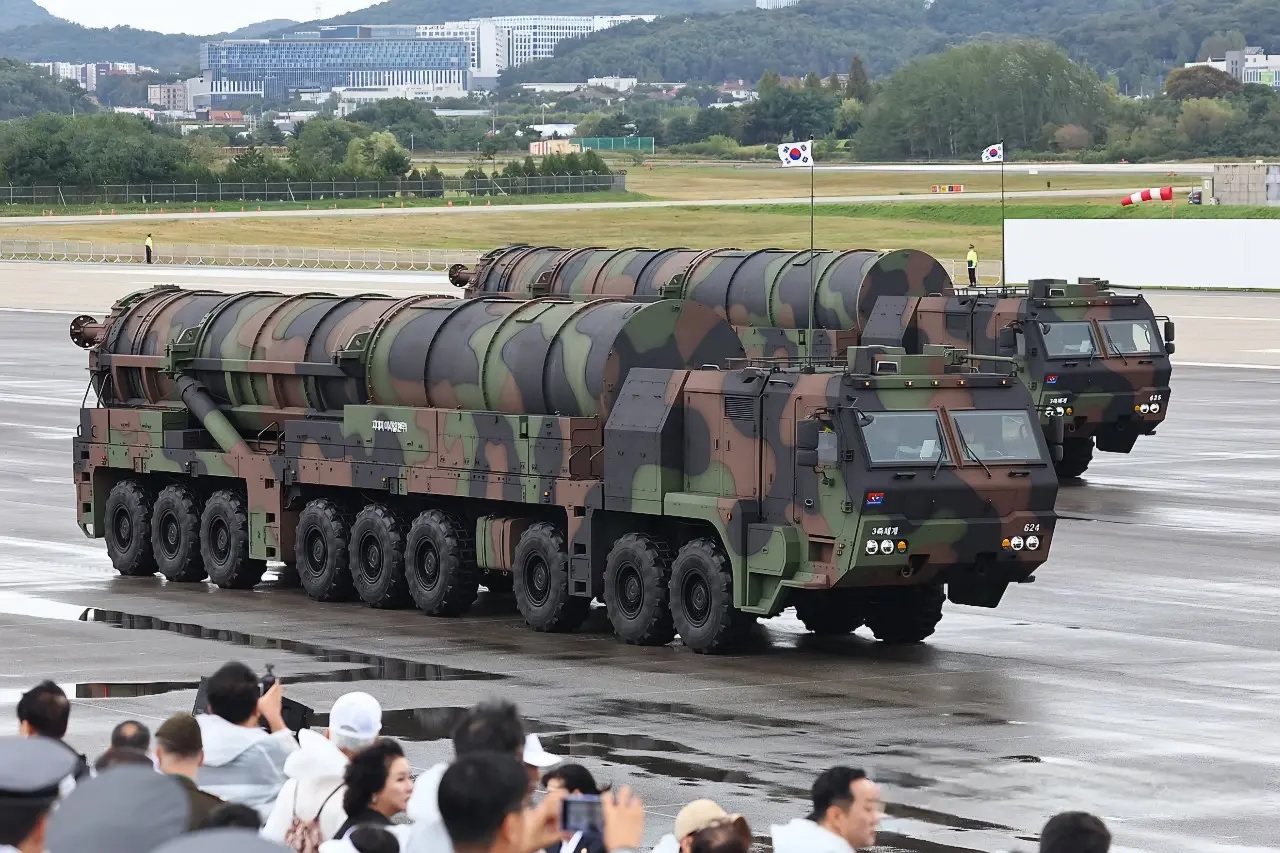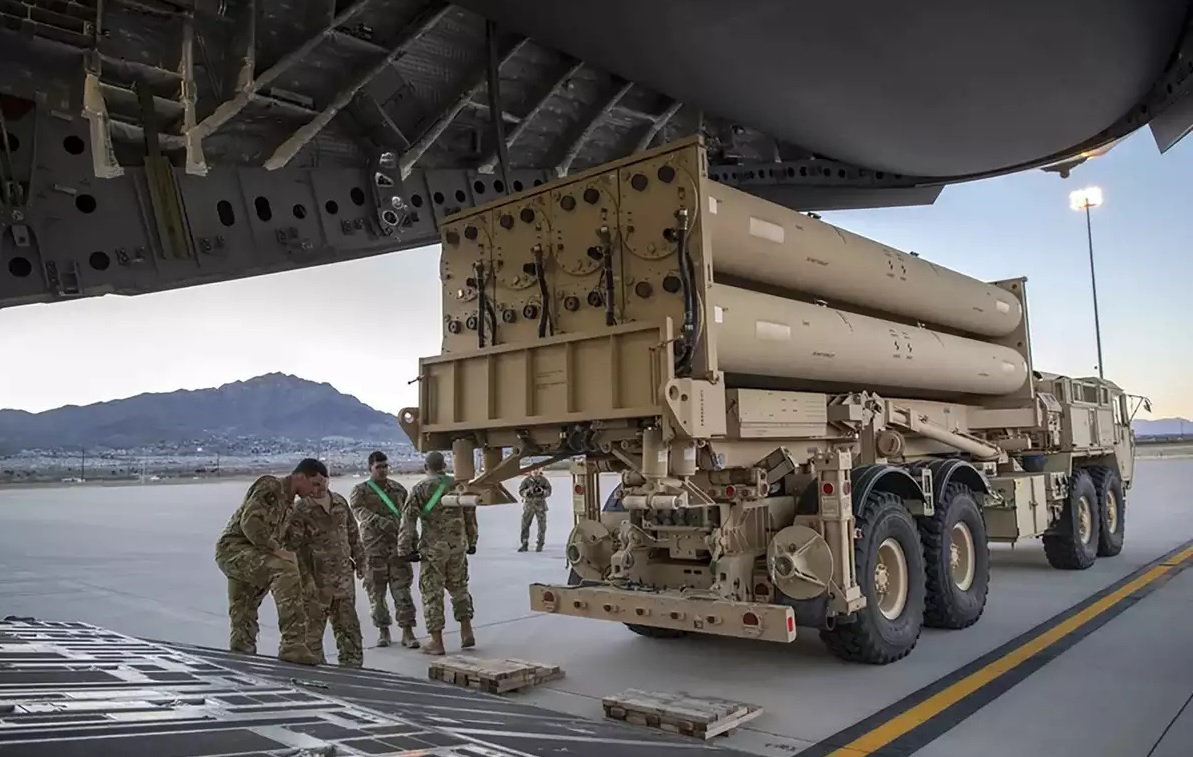South Korea Unveils Hyunmoo-V Ballistic Missile and Joint Strike Ship as New Strategic Assets

During the 76th Armed Forces Day parade on October 1st, South Korea showcased two significant developments in its defense strategy: the Hyunmoo-V ballistic missile and the concept of the Joint Strike Ship (JSS). These advancements form part of the nation's broader "Three-Axis" defense system aimed at countering the threat posed by North Korea. The unveiling of these assets underscores South Korea's commitment to strengthening its military capabilities, particularly in the face of growing tensions on the Korean Peninsula.
Hyunmoo-V Ballistic Missile: A Powerful New Addition
The Hyunmoo-V ballistic missile represents the latest and most formidable addition to South Korea's Hyunmoo missile family. As a crucial component of the Korea Massive Punishment and Retaliation (KMPR) strategy, the missile is designed for preemptive or retaliatory strikes against North Korean military assets, including fortified underground facilities. The KMPR is one pillar of South Korea's "Three-Axis" system, which also includes the Kill Chain and the Korea Air and Missile Defense (KAMD) frameworks. Together, these systems aim to detect threats, intercept incoming missiles, and deliver devastating counterattacks in the event of an escalation.
The Hyunmoo-V's capabilities are impressive:
- Warhead weight: The missile carries an 8-9 ton warhead, the heaviest among conventional ballistic missiles, allowing for substantial destructive power.
- Range: While officially confirmed to have a minimum range of 300 km, its maximum range could extend up to 5,000 km if a lighter warhead is used. This places major North Korean facilities well within its reach, and even targets beyond the Korean Peninsula could be threatened.
- Underground strike capability: The missile’s warhead can penetrate and destroy structures located over 100 meters below ground, making it effective against fortified bunkers and underground facilities used by North Korea to store weapons of mass destruction (WMDs) or operate command centers.
- Speed: In its terminal descent, the missile can reach speeds of nearly Mach 10, making it extremely difficult for existing missile defense systems to intercept.
The Hyunmoo-V's composition, incorporating heavy metals in its warhead, enables deep-penetration strikes, while its active guidance system ensures accurate targeting even against evasive or hardened installations. This capability provides South Korea with a potent tool for neutralizing North Korea's deeply buried infrastructure, a key element of its military strategy.
The Joint Strike Ship: A Strategic Naval Asset in Development
South Korea's defense strategy also extends to the sea, with plans to operate Hyunmoo-V missiles aboard a future Joint Strike Ship (JSS). The JSS is envisioned as a multi-role naval platform capable of deploying ballistic missiles, launching airstrikes, and supporting amphibious operations. The idea was initially introduced at MADEX 2023, and the project is still in the concept research phase, without formal requirements from the Republic of Korea (ROK) Joint Chiefs of Staff. Although the details remain vague, the ship's potential role in South Korea's strategic operations is clear.
Key Features and Challenges
The JSS would likely incorporate advanced stealth features and be equipped with a vertical launch system (VLS) to carry various missile types, including the Hyunmoo-V. This capability would give South Korea a new maritime-based strike option, potentially enhancing the KMPR's reach. Additionally, it could serve as a floating platform for air defense, missile launch operations, and amphibious assaults, providing greater operational flexibility in the Indo-Pacific region.
However, the JSS program faces challenges, including the significant costs involved, debates over strategic value, and the need for adequate manpower to operate the vessel. Like the CVX aircraft carrier project, which has faced similar scrutiny, the JSS is a subject of debate within South Korea's defense community. As the country’s interests extend further into the South China Sea and the broader Indo-Pacific, there is increasing pressure to ensure that such programs are well-justified and capable of meeting the evolving regional security landscape.
The "Three-Axis" Defense System and Strategic Command
The Hyunmoo-V and JSS align with South Korea's "Three-Axis" defense system, which is composed of:
- Kill Chain: A preemptive strike mechanism targeting North Korean missile and nuclear sites in the event of a detected threat.
- Korea Air and Missile Defense (KAMD): An integrated defense network aimed at intercepting incoming ballistic missiles using various systems, including the U.S.-provided THAAD, and South Korea's L-SAM, M-SAM, and Patriot systems.
- Korea Massive Punishment and Retaliation (KMPR): A retaliatory strategy involving massive strikes against North Korean leadership and key facilities in response to an attack.
The recent establishment of the ROK Strategic Command underscores the importance of these systems. This new command is tasked with overseeing South Korea’s nuclear and WMD response operations, integrating advanced technologies in space, cyber, and electronic warfare. As more strategic assets come under its purview, the command will be critical in ensuring the country’s preparedness against nuclear and missile threats.
Enhancing Deterrence in the Face of Regional Tensions
The unveiling of the Hyunmoo-V and the development of the JSS represent more than just technological advancements; they signal a strategic shift towards a more assertive defense posture in response to North Korea’s continued nuclear and missile tests. The Hyunmoo-V’s ability to deliver deep underground strikes complements the KMPR’s goal of deterring North Korean aggression by ensuring that any attack would be met with overwhelming retaliation. Meanwhile, the JSS, if realized, would provide South Korea with a mobile platform to project power across the region.
Together, these assets add to South Korea’s growing military capabilities, making the country not just a regional power but a strategic player in the broader Indo-Pacific security landscape. As debates continue regarding the feasibility and scope of these projects, the underlying message is clear: South Korea is taking significant steps to bolster its defense posture and ensure its national security in an increasingly complex environment.


